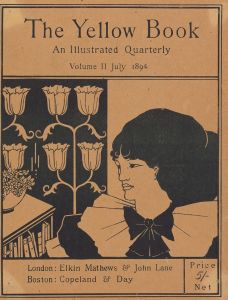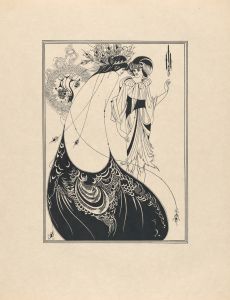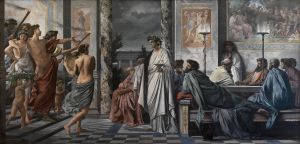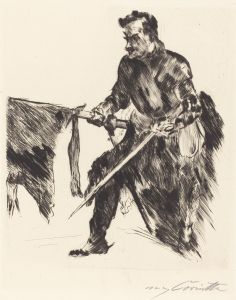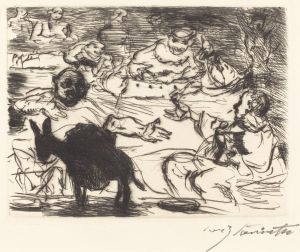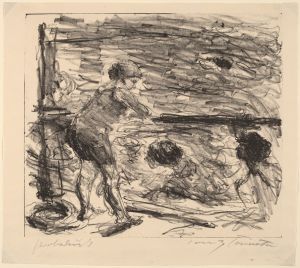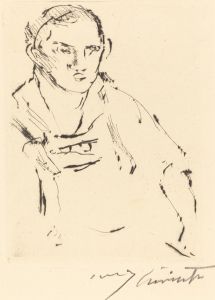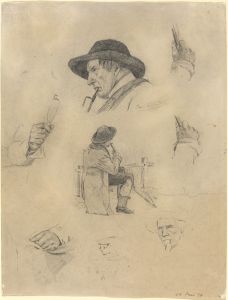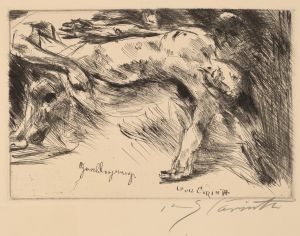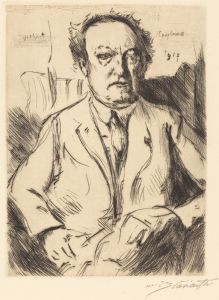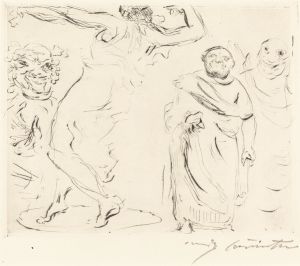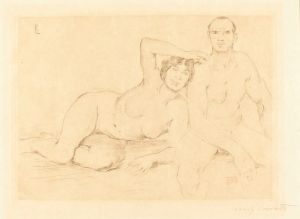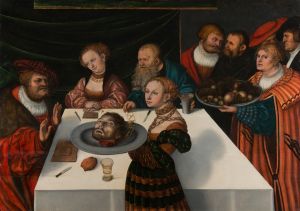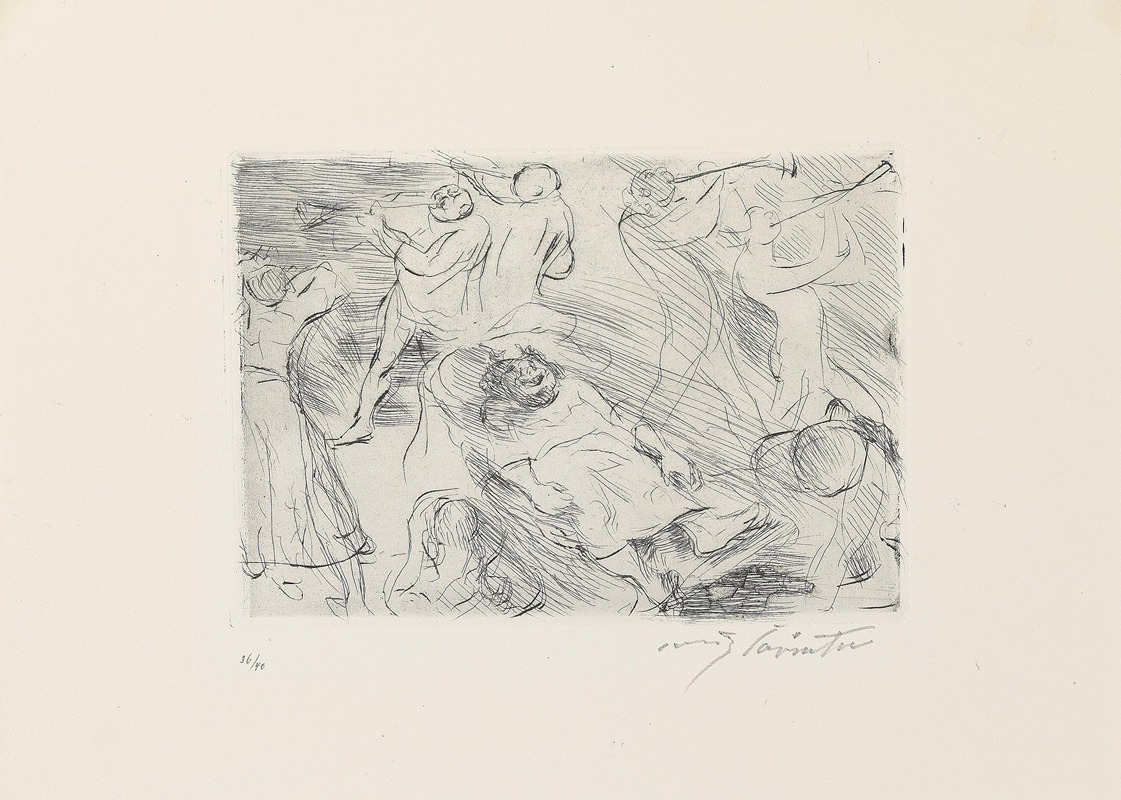
Gastmahl des Trimalchio 07
A hand-painted replica of Lovis Corinth’s masterpiece Gastmahl des Trimalchio 07, meticulously crafted by professional artists to capture the true essence of the original. Each piece is created with museum-quality canvas and rare mineral pigments, carefully painted by experienced artists with delicate brushstrokes and rich, layered colors to perfectly recreate the texture of the original artwork. Unlike machine-printed reproductions, this hand-painted version brings the painting to life, infused with the artist’s emotions and skill in every stroke. Whether for personal collection or home decoration, it instantly elevates the artistic atmosphere of any space.
Lovis Corinth was a prominent German painter and printmaker, known for his significant contributions to the transition from Impressionism to Expressionism in the late 19th and early 20th centuries. One of his notable works is "Gastmahl des Trimalchio 07," which is part of a series of artworks inspired by the Roman novel "Satyricon" by Petronius. This novel, written during the 1st century AD, is a satirical piece that provides a vivid depiction of Roman society, particularly focusing on the extravagant and decadent lifestyle of the Roman elite.
The painting "Gastmahl des Trimalchio 07" is one of several pieces Corinth created to capture the essence of the lavish banquet hosted by Trimalchio, a wealthy freedman, which is a central episode in the "Satyricon." This banquet scene is renowned for its opulence and the absurdity of the excesses displayed by Trimalchio and his guests. Corinth's interpretation of this scene is marked by his dynamic brushwork and vibrant use of color, which effectively convey the chaotic and indulgent atmosphere of the feast.
Corinth's style during this period was characterized by a vigorous and expressive technique, which can be seen in the way he captures the movement and energy of the figures in the painting. His use of color and light adds to the dramatic effect, highlighting the contrasts between the figures and their surroundings. The composition of the painting likely reflects Corinth's interest in exploring human emotions and interactions, a theme that is prevalent throughout his body of work.
The "Gastmahl des Trimalchio" series is significant not only for its artistic merit but also for its reflection of Corinth's engagement with classical literature and themes. By drawing inspiration from the "Satyricon," Corinth connects his work to a broader historical and cultural context, offering viewers a glimpse into the timeless nature of human excess and folly.
Lovis Corinth's career was marked by a continuous evolution of style and technique. Initially influenced by Impressionism, he gradually moved towards a more expressive approach, which became more pronounced after a stroke in 1911 that affected his physical abilities. Despite this setback, Corinth continued to produce powerful and emotive works, further solidifying his place in the art world.
The "Gastmahl des Trimalchio" series, including "Gastmahl des Trimalchio 07," exemplifies Corinth's ability to blend historical themes with contemporary artistic techniques. His work remains influential, and he is regarded as one of the leading figures in German art during the late 19th and early 20th centuries. Corinth's paintings are housed in various museums and collections worldwide, where they continue to be studied and appreciated for their contribution to the development of modern art.





